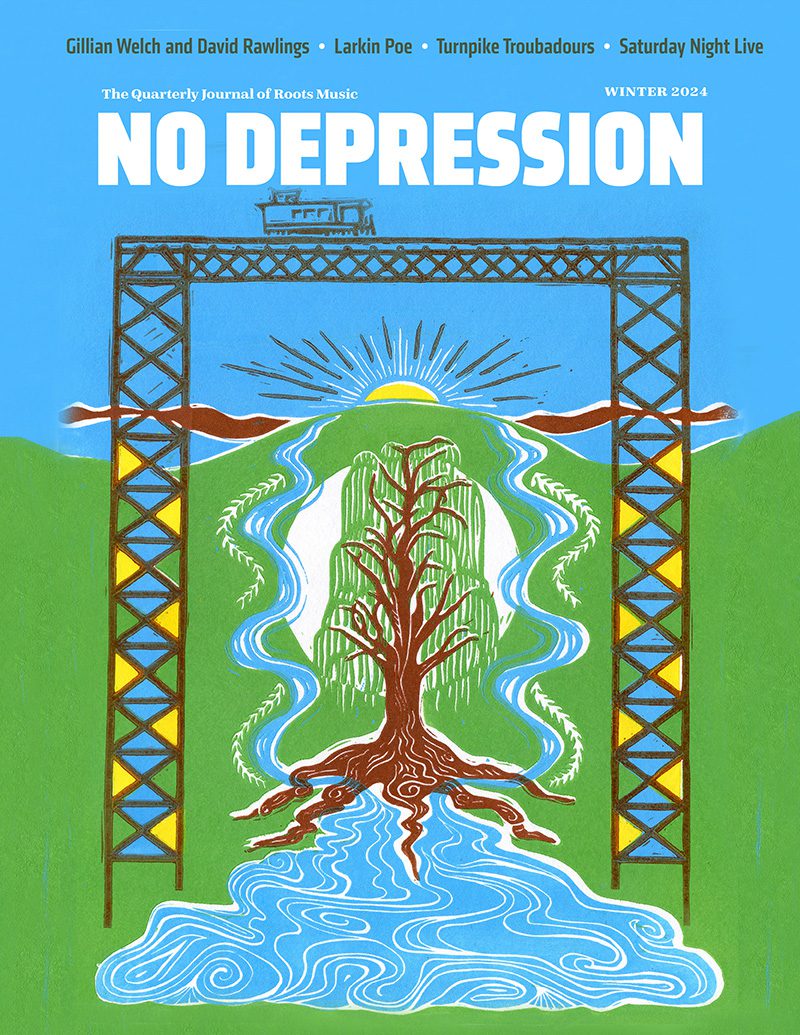Honey Ridge Creek Dippers – Ash Grove (Santa Monica, CA)
After only three or four songs by the Honey Ridge Creek Dippers, one couple in the audience decided they’d had enough. No matter that they had great seats for what was being billed as the debut performance of the trio fronted by Victoria Williams and her recently reclusive, former-Jayhawk hubby Mark Olson; no matter that they shelled out 15 bucks a pop to be there. This musical trip before them just wasn’t what they expected. Maybe they’d come to be at the Ash Grove on this evening by way of airwaves, having heard the Jayhawks’ “Blue” in between Bonnie Raitt and Counting Crows on the local (and now-defunct) AAA station. But on this night, only 10 minutes or so into the Dippers’ live career, there they went — settling their tabs, grabbing their coats and whisking off into the chilly Santa Monica night.
In some ways, you could not blame them. For those expecting more of the warm and fuzzy country-rock Olson helped sow with his former band, the Dippers might have come across as a pretty off-kilter experience, and that’s not just because of his wife. Williams — she of skinny bones, warbly voice, flighty visions and furry, floppy top hat pulled down to her brow — is like an invading alien to those unaccustomed to her stylings, but it’s not like Olson and violinist Mike Russell brought the proceedings back down to Earth. What transpired was more of an experiment in Americana, if you will, one that fused the couple’s own folk-rock leanings with the sunstroked meanderings of Giant Sand and the chamber-rock reaches of Alejandro Escovedo. In other words, no “Blue” or “Martin’s Song” to be found here.
But to invoke the connections with Escovedo and Giant Sand would be to suggest that the Dippers actually conceptualized such a vision for the evening. Instead, it all just kinda happened as if by random, maybe even by accident. There they were, surrounded with what might have been every single instrument they owned, from nylon string guitars and dulcimers to banjo, bass, harmonica, 12-strings and Stratocasters. They pondered aloud what songs to play, and with which instruments. Sometimes Williams sang into the mike, sometimes she re-learned a song as they played it. At one point in mid-song, Williams struggled simultaneously to sing, check her fingering up at the top of the neck of her banjo, and adjust the positioning of her harmonica holder. Later, Olson leaned over to Williams and suggested she play the harmonica during the solo break that was already half-finished.
You could easily write off such looseness to this being a new band. More likely, for Williams and Olson, it is a way of life. “Just another day on the Olson farm,” he joked. It was definitely not hard to imagine. In fact, it seemed more real that the audience was peeking in on just another watch-the-cactus-grow strum session on the front porch of their desert abode some 150 miles from metropolitan Los Angeles than the reality of a nightclub on the Santa Monica pier. The only things missing were the Joshua Trees, the intense heat and Williams’ oft-mentioned dogs Molly and Solo.
This is not to say that the Dippers were a disaster; rather, they were just on a different rickety plane from the rest of the solar system. While steering clear of the Jayhawks catalog, the Dippers displayed a wide palette of styles, ranging from the playful, Tin Pan Alley-ish shades of “Stars Over Alabama” to the sweet folk duet “When We Sing Together” (originally recorded by the couple on Williams’ Loose). There was a fiddle tune, hints of an East Indian groove, and one very loud, amplified snap of a broken banjo string. Williams took the lead on songs about horses, bunnies and the day Solo was neutered (“It’s a sad day when your dog must get fixed,” she said in introduction). Olson offered a Tom T. Hall cover and a few baroque-tinged originals. Sometimes it all meshed, other times it was just a big fat mess. But it didn’t matter. The gig was one big group hug, with Williams and Olson charming each other as well as the audience.
“I’m just happy to hear you out playing, Mark,” Victoria said late in the set. Ain’t it the truth; that, we realized, was what this particular performance was really about. And it’s probably a good thing the AAA fans left when they did. If they had endured the set and observed the standing ovation that erupted at its conclusion, they might have flat-out demanded their money back.


